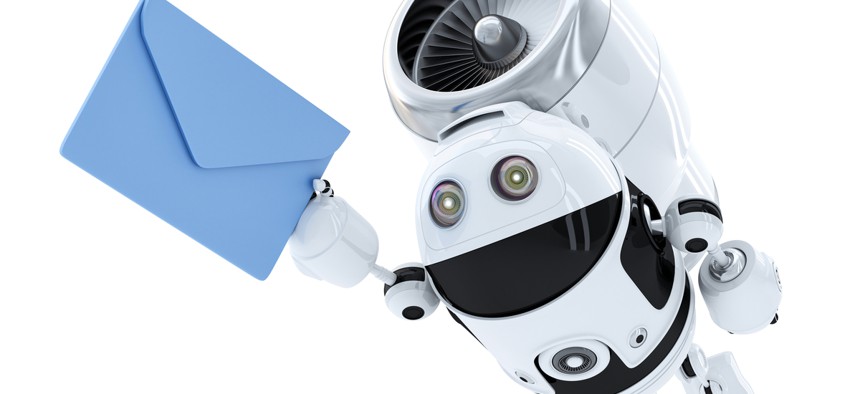Americans Say They’re Ready For Robots To Deliver The Mail

kirill_makarov/Shutterstock.com
A survey conducted by the Postal Service Inspector General polled citizens on how they would feel if a robot delivered the mail with—or instead of—a human.
Imagine a truck pulls up to the curb in your neighborhood, parks and releases a swarm of robots, each targeting a different house on your street. Turns out, most Americans are OK with that.
The U.S. Postal Service has been considering how best to incorporate autonomous robots into mail and package delivery and recently conducted an online poll of almost 3,000 Americans to determine whether the public is on board with the idea.
“Given their potential benefits, the Postal Service may someday consider incorporating delivery robots into its operations and, if so, would want to perform the usual feasibility assessments that would come along with such an idea,” the Postal Service Inspector General wrote in an April 9 report on the survey. “Since the American public is the Postal Service’s customer base, however, it would be advisable for the organization to keep a close eye on how public opinion regarding this new technology evolves over time.”
The survey asked citizens about two different kinds of robots: “independent delivery” bots that would walk the streets alone and “helper robots” that would accompany human letter carriers.
According to the survey, independent delivery robots would have a number of customer-focused features. Customers would be able to pick their time of delivery—with windows as small as 15 minutes depending on distance—as well as the place. Prior to delivery, the customer would receive an email, text or app notification with a four-digit code that will unlock the delivery bot’s compartment.
The “helper robot” model is more straightforward. The helper bot would accompany traditional mail carriers, assisting with heavier packages and keeping sensitive deliveries secure while the carriers walk their routes.
Respondents were generally on board with the idea once it was fully explained. The inspector general found that most people had some knowledge about drones or self-driving vehicles but knew little about the potential for delivery robots. Once the idea was explained, most—81 percent—said they believed delivery bots could be on the streets within five years.
Some more key findings from the report:
- More respondents reported liking the delivery robot concepts (50 percent) than disliking them (28 percent).
- Flexible delivery and improved working conditions are the best-perceived benefits. The ability to receive deliveries when and where recipients choose is viewed as independent delivery’s greatest benefit, while helper robots’ ability to improve working conditions and reduce injuries for delivery people are perceived as that concept’s best benefits.
- One-quarter to one-third of respondents said they would be willing to pay slightly more for the benefits of independent delivery, depending on which benefit was cited.
- The public has some concerns about the safety of delivery robots, but their primary concern is with potential job losses for delivery people.
- Millennials and urban residents like the idea of delivery robots more than their older or more rural counterparts.
That said, the technology might not be there yet. A separate Postal Service inspector general report issued April 9 looked at the technical feasibility of different automation options, including “for last-mile delivery.”
“Compared to [autonomous mobile robots] in plants, the use of robots in delivery is too economically and technologically immature to be scalable in the short term, especially for independent robot delivery applications,” the second report states.
The report noted the Postal Service has yet to run any pilots around autonomous delivery. However, the authors go on to say the technologies are worth studying and that “accompanied delivery”—or helper bots—could be deployed much sooner.
But with the public on board—and possibly willing to pay a premium—the idea is worth studying further.
The survey canvassed residents of all 50 states and D.C. between the ages of 18 and 75. The survey has a 95 percent confidence interval, with a margin of error of +/- 1.8 percent.
Editor's note: The headline of this article was updated to clarify the survey focused on ground-based robots.






